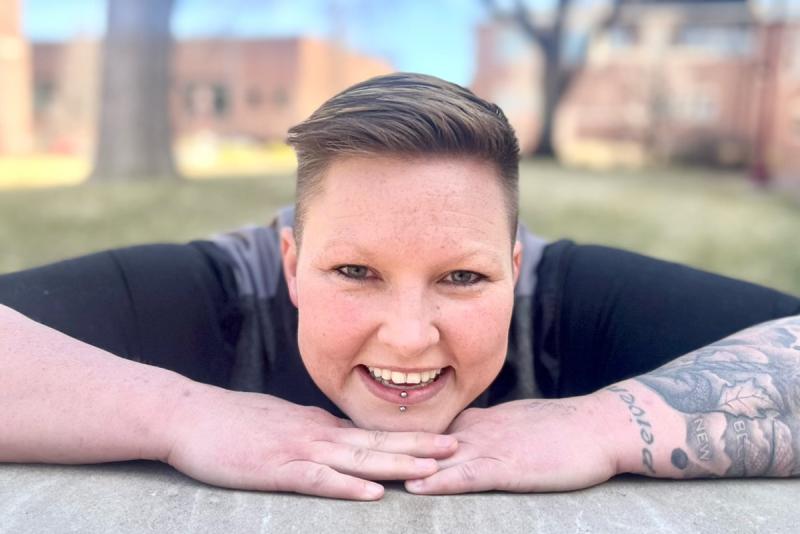Harrop facilitated GSSW’s recent discussion with poet and body-positivity activist Sonya Renee Taylor.
Watch
The cultural belief that weight is controllable is at the heart of why social work has been relatively slow to recognize and address weight stigma and discrimination, Harrop says.
Through a new course at GSSW — Embodied Practice: Ethical Approaches to Fatness and the Body — Harrop is educating a new generation of social workers to think differently about weight. Each week, the course examines the intersections of weight and weight stigma with other identities and forms of bias and discrimination. One of the learning aims is for students to see the world differently. They use PhotoVoice to document where weight stigma is showing up in their world. They get a weekly prompt, such as taking a picture of when the world is being set up for certain sized bodies, and they share and reflect together. It can be an emotional experience, Harrop says.
Imagine coming out of the grocery store to find that you can’t leave because the space between cars is too tight. Or finding that the desks in your social work classroom can’t comfortably fit your body.
The course cultivates empathy and “helps people to retell the story of their body from this weight stigma lens,” Harrop says. “How do I want this to impact my practice? How do I want to be and show up for other people?”
Harrop wants to see weight integrated into power, privilege and oppression curricula more broadly, so all social work students everywhere learn about weight stigma and discrimination. “By ignoring a weight-justice lens, we’re missing things that can impact people’s lives,” Harrop says. “When students are learning to identify their own positionality, body size should be considered. We have to help our students be more conscious and aware.”
For now, Harrop is one of a small group of social work scholars nationwide focused on weight stigma and justice, but the ranks are growing. Harrop recently founded the Body Liberation Imagination Project (BLIMP) to foster interdisciplinary collaboration and help students to connect with mentors. Around 30 people are meeting every other week to build out the collaborative community.
Although weight stigma is still considered an emerging area of social work, Harrop underscores the urgency and high stakes. Health care providers are less likely to touch a large body and more likely to have disapproving or discriminatory beliefs about higher weight patients, automatically labeling them as less compliant, less intelligent, less self-controlled and less motivated. People in higher weight bodies can be charged higher health care premiums and may have difficulty accessing life and health insurance. Transplants, gender-affirming surgeries and fertility treatments may be denied solely based on BMI, says Harrop, who is conducting a systematic review related to BMI cutoffs for knee replacement surgery. “Surgeries are held hostage from fat people,” Harrop says. “We should be really critical of ourselves when we have cutoffs just based on BMI.”
There’s more. A higher weight person is less likely to be hired or promoted than a thinner peer and likely makes less money doing a similar job. And, higher weight women are less likely to be funded for higher education compared to men and smaller women. These economic impacts have lasting consequences, Harrop notes. “Being in a larger body can be impoverishing.”
Lives are literally on the line, too. Weight-based bullying is one of the most prevalent forms of bullying among youth and is a leading contributor to youth suicidality.
Given such evidence, Harrop says it is critical that social workers recognize and address these types of disparities and risks. Even well-meaning projects to address things like childhood obesity can be implicated in systems of oppression. “How does it feel to be a fat child in a world that is trying to eradicate fat children?” Harrop asks. “We need to increase awareness around weight stigma like awareness around white privilege or racism. We need to learn how to treat fat people as people, not as problems or diagnoses.”





